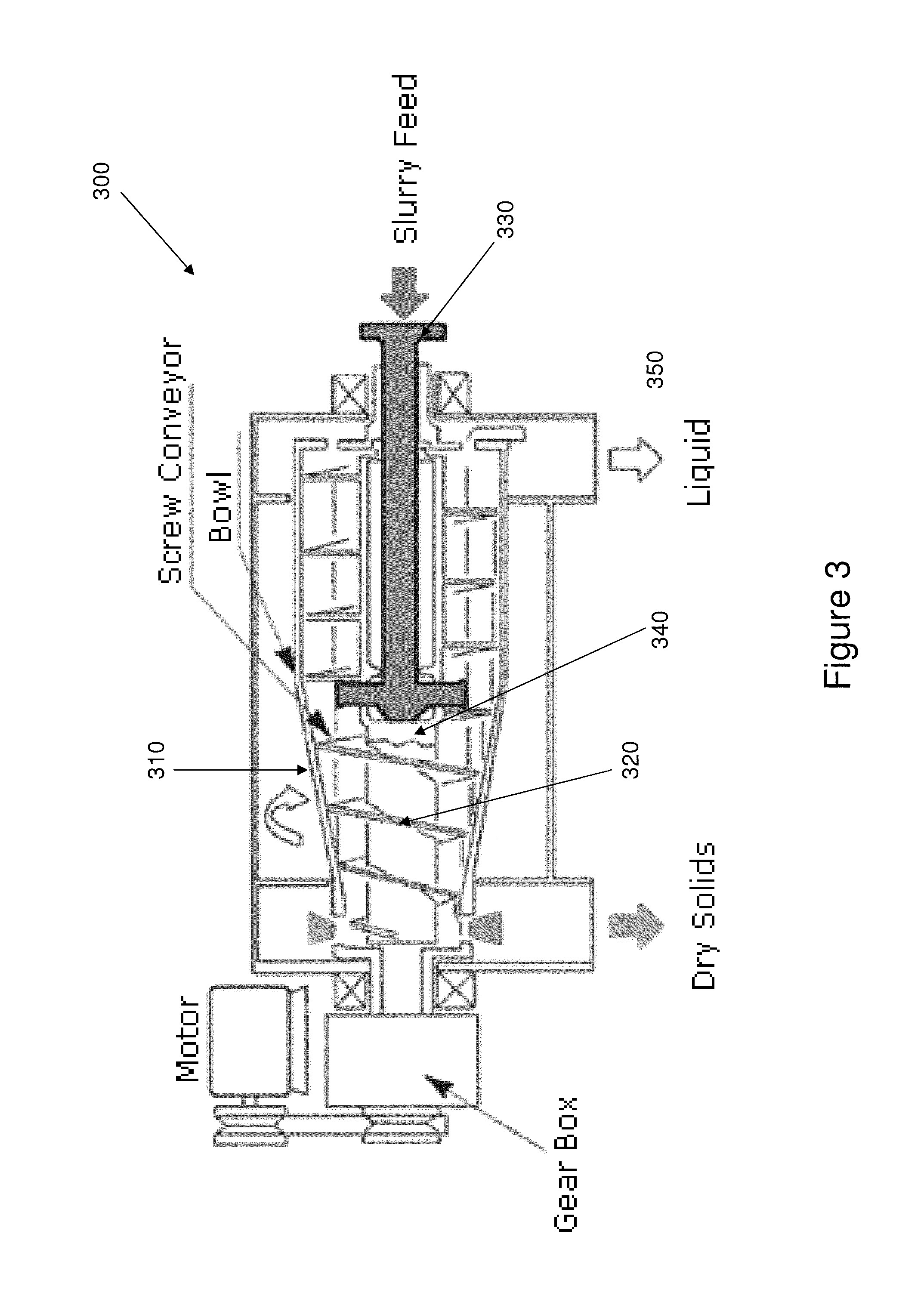Process of separating components of a fermentation broth
a technology of fermentation broth and components, applied in the field of separation of components of fermentation broth, can solve the problems of complex isolation process, inability to achieve useful purity of compounds on large scale, and inability to achieve isolation procedures developed on laboratory benchtop scale that are not practical or even viable at pilot or commercial scal
- Summary
- Abstract
- Description
- Claims
- Application Information
AI Technical Summary
Benefits of technology
Problems solved by technology
Method used
Image
Examples
example i
Centrifugation of Fermentation Broth
[0187]This example shows the use of a disc-stack centrifuge to remove cell mass and other solids from a fermentation broth.
[0188]1,4-Butanediol fermentation broth produced by a genetically modified E. coli was clarified via centrifugation. A GEA-Westfalia disc stack centrifuge was used for this step. The lab-scale centrifuge, model CTC 1 Whispefuge, has a bowl capacity of 1.0 liters and a solids holding space of 0.55 liters. The bowl hood, distributor, disc stacks, and all process wetted parts are constructed with high tensile strength stainless steel. The feed to centrifuge unit was controlled using a peristaltic pump, with the flow rate held constant at approximately 0.25 liters per minute. A back pressure of about 15 psi was maintained in the system by throttling a regulating valve on the outlet centrate flow. The centrifuge was operated at 12,000 rpm and the feed was at ambient room temperature. The centrifugation removes cellular biomass and ...
example ii
Ultrafiltration of Fermentation Broth
[0190]This example shows the ultrafiltration of the fermentation broth following removal of cell mass and other solids by centrifugation conducted in Example I.
[0191]A GEA lab scale filtration unit, Model L, was used to further clarify the product produced in Example 1. The Model L filtration unit was equipped with Hydranautics 5K PES flat sheet membranes. Total installed membrane area was 0.144 m2. The transmembrane pressure was maintained at approximately 36 psi by adjusting inlet flow and back pressure regulating valve. The temperature of the feed was maintained at approximately 27° C. using an inlet heat exchanger. The permeate flow rate was measured throughout the course of the experiment to determine the flux. Table 6 shows the permeate flux in liters / m2 / h as a function of the volumetric concentration factor (VCF).
[0192]
TABLE 6Ultrafiltration flux versus VCFFluxVCFliters / m2 / h1.1815.021.4415.371.8615.292.6015.344.3315.066.5014.79
[0193]Sample...
example iii
Nanofiltration of Fermentation Broth
[0195]This example shows the nanofiltration of the fermentation broth following ultrafiltration conducted in Example II.
[0196]A GEA lab scale filtration unit, Model L, was equipped with GE DK nanofiltration flat sheet membranes. Total installed membrane area was 0.072 m2. This set up was used to filter the UF permeate obtained from Example 2. The transmembrane pressure was maintained at approximately 270 psi by adjusting inlet flow and back pressure regulating valve. The temperature of the feed was maintained at 38° C. using an inlet heat exchanger. The permeate flow was measured throughout the course of the experiment to determine the flux. Table 8 shows the flux in liters / m2 / h as a function of the volumetric concentration factor (VCF).
[0197]
TABLE 8Nanofiltration fluxFluxVCFliters / m2 / h1.3314.691.7413.412.5010.42
[0198]Samples were also drawn throughout the experiment to determine the permeate quality. Organic acids where measured using LC-MS, salt...
PUM
| Property | Measurement | Unit |
|---|---|---|
| pore sizes | aaaaa | aaaaa |
| pore sizes | aaaaa | aaaaa |
| pore size | aaaaa | aaaaa |
Abstract
Description
Claims
Application Information
 Login to View More
Login to View More - R&D
- Intellectual Property
- Life Sciences
- Materials
- Tech Scout
- Unparalleled Data Quality
- Higher Quality Content
- 60% Fewer Hallucinations
Browse by: Latest US Patents, China's latest patents, Technical Efficacy Thesaurus, Application Domain, Technology Topic, Popular Technical Reports.
© 2025 PatSnap. All rights reserved.Legal|Privacy policy|Modern Slavery Act Transparency Statement|Sitemap|About US| Contact US: help@patsnap.com



